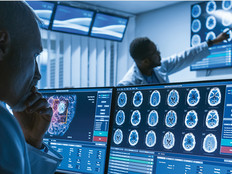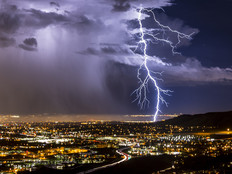Gulf Coast Healthcare Facilities Prep for Increased Possibility of Hurricanes
Since El Niño has ended for this year, the National Oceanic and Atmospheric Administration’s Climate Prediction Center reports that conditions are even more favorable for an above-average Atlantic hurricane season. The CPC increased its forecast for an above-average season in August to a 45 percent chance (up from its previous prediction of a 30 percent chance in May), this time calling for 10-17 named storms, of which five to nine will become hurricanes and two to four will become major hurricanes.
For Gulf Coast healthcare organizations, the growing odds of a major storm making landfall should serve as a stark reminder that disaster recovery plans need to be more than an afterthought. Yet for many organizations, that’s often what such plans turn out to be.
A recent disaster preparedness survey of 109 healthcare professionals from DrFirst found that almost 70 percent of respondents were affected by more than two disasters in the past 5 years. To make matters worse, almost half of the 109 respondents also believe their organization's disaster plan isn’t comprehensive enough to cover a variety of scenarios.
A DR plan in healthcare should be as extensive as possible, especially considering the roles many such organizations play following a disaster.
“Hospitals suffer probably twice as much from disasters as everybody else,” Al Berman, president of the Disaster Recovery Institute Foundation, previously told HealthTech. “They have to deal with their own problems, and they have to deal with everyone else’s.”
BECOME AN INSIDER: Sign up for access to exclusive HealthTech videos, whitepapers and articles.
Organizations Find Ways to Test Their Disaster Recovery Systems
MD Anderson Cancer Center is one organization that isn’t taking any chances when it comes to disaster recovery. Twice each year, the cancer care center shifts its IT production to its DR systems for a few days.
“Actually doing it is the only way to know for sure that it works,” says Charles Suitor, associate vice president and CTO for the Houston organization. “The process teases out little things that would have gone wrong if you’d just waited for a disaster to try out your system.”
For example, a DR system might work flawlessly when it’s initially deployed, but subsequent updates, architecture changes and the addition of new applications can throw a wrench in the works.
“Just because you validate the system once,” Suitor warns, “doesn’t mean it still works years later.”
Real-world tests such as these not only ensure that the DR system works as expected but also offer IT and clinical staff valuable hands-on experience switching over to the system. This way, when a disaster does occur, it’s not their first rodeo.
Sometimes, however, the experience of a major storm is the only way to reveal the weaknesses in a DR plan, which can allow an organization to recalibrate its processes.
“Most recently, Hurricane Dorian allowed us the opportunity to prepare and implement at full scale,” says William Walders, CIO of nonprofit community health system Health First . “Thankfully, the storm issues were minor in Florida, and we only had some minor connectivity issues. However, it provided exposure to new personnel and allowed our veteran staff an opportunity to knock the rust off their processes and expertise.”
READ MORE: Discover how disaster recovery in the cloud differs from online recovery.
Look to the Cloud When Skies are Cloudy
MD Anderson Cancer Center is heavily invested in its two offsite data centers, which is why it hasn’t yet started using public cloud for disaster preparedness. But for many other healthcare providers, a cloud-based Disaster Recovery as a Service (DRaaS) makes sense — especially in light of some recent trends.
Over the past few years, the cost of DRaaS solutions has declined significantly. Many DRaaS solutions also now let customers tier their workloads, so mission-critical ones get replicated first and fast, rather than running everything all at once. And when there’s not a storm in sight, DRaaS provides an additional layer of protection against man-made disasters such as ransomware.
Regardless of whether a healthcare provider uses DRaaS or owns offsite data centers, neither of those systems should be considered the ultimate solution when it comes to a DR plan.
Senior care organization Lifespace Communities has expanded its disaster preparedness plan to include a hotline. This key piece allows the Des Moines, Iowa-based organization to communicate seamlessly with staff, residents and their families in its coastal communities, providing them with critical information as hurricanes approach.
“Residents, team members and family members can call the hotline to get hourly updates about where the storm is and what we’re doing to protect the residents,” says John Couture, IT vice president. “They also can find out how to get in touch with their loved ones if, say, the phone in the resident’s apartment is out.”
As for Health First, the organization has adopted multiple providers and technologies to manage even everyday network issues.
“The ‘last mile’ is the least reliable,” Walders says. Lapses in network connectivity from power outages caused by storms are important to consider, as are those that can be caused by everyday occurrences, such as rodents chewing on wires or construction equipment damaging connections.
“We've added cellular and satellite for voice and are dabbling with the idea of leveraging them for tertiary circuits, but current bandwidth constraints don't make this viable at scale,” Walders says. “We're all anxious to see what the future could hold with 5G.”








